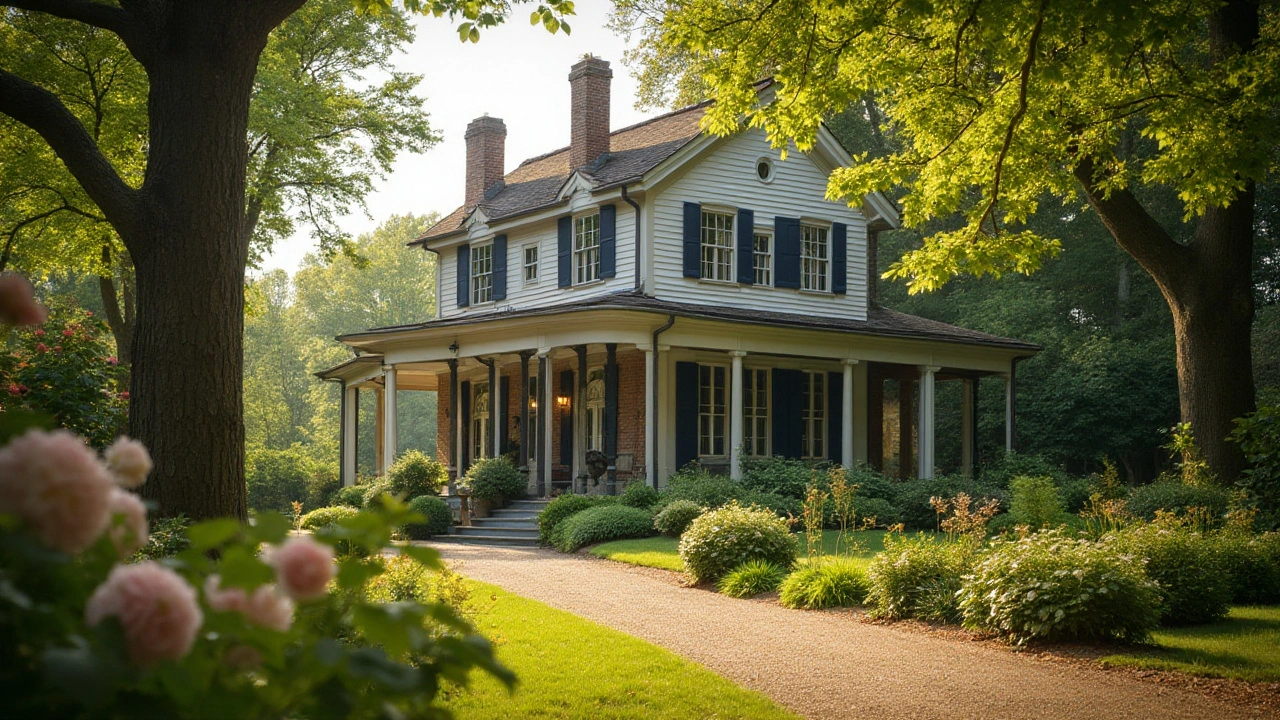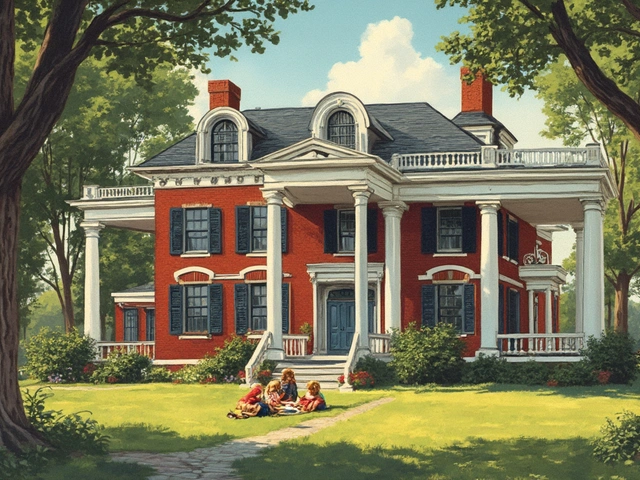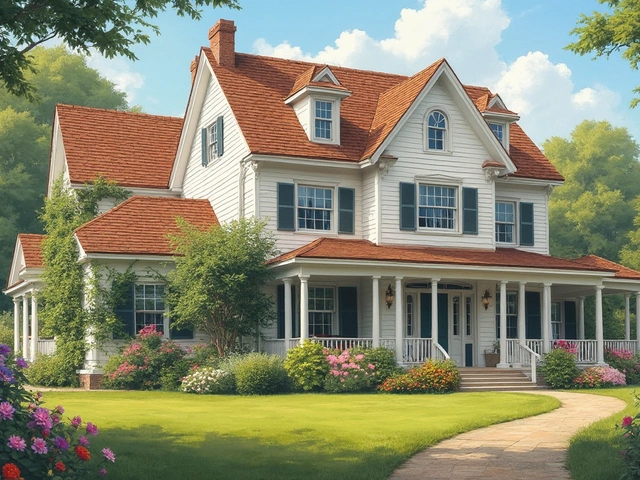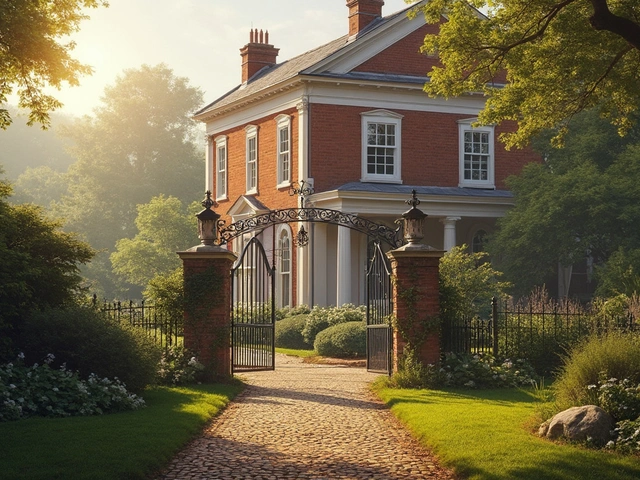Colonial Revival architecture is a design that beautifully blends the essence of the past with the conveniences of the present. This classic style, which emerged in the late 19th century, sought to revive elements of American colonial architecture.
Whether you are an architecture enthusiast or a homeowner looking to add a timeless touch to your space, understanding the hallmarks of Colonial Revival design is both fascinating and inspiring.
Dive in to get a closer look at its origins, key features, and practical ways to integrate this captivating style into your modern home.
- The Origins and Evolution
- Key Architectural Features
- Incorporating Colonial Revival in Modern Homes
- Interesting Facts and Practical Tips
The Origins and Evolution
The journey of Colonial Revival architecture began in the late 19th century, precisely around the 1870s, a period when America was experiencing rapid growth and a newfound respect for its heritage. As the country moved away from the Victorian era's elaborate and ornamental styles, there was a longing for simplicity and a connection to the nation's roots. This desire manifested in a renewed interest in the colonial period's architecture, leading to what we now call the Colonial Revival style.
Interestingly, the movement gained significant momentum following the 1876 Centennial Exposition in Philadelphia. The exposition celebrated America’s 100th birthday and featured several buildings designed in colonial style, sparking widespread admiration and nostalgia. Architects and homeowners alike were drawn to the symmetry, proportion, and simplicity that characterized colonial architecture, and they began to incorporate these elements into new constructions.
The Colonial Revival style drew from various colonial influences, including Georgian, Federal, Dutch Colonial, and Cape Cod styles. However, it wasn't just a direct copy of past designs but a reinterpretation that adapted colonial elements for a modern context. This meant that while homes might feature familiar details like gable roofs, dormer windows, and brick facades, they were often equipped with the most contemporary conveniences of the time, such as indoor plumbing, electric lighting, and central heating.
One of the charming aspects of the Colonial Revival movement was its adaptability. As cities grew and suburbs began to emerge, architects found ways to scale down the grandeur of colonial estates to fit smaller, suburban lots. This democratization of architecture meant that more Americans could afford to build homes with a touch of historic elegance. One expert on the matter once commented,
"Colonial Revival homes didn't just echo the past; they incorporated a history lesson into everyday life, making each home a tribute to American heritage."
By the mid-20th century, the Colonial Revival style had cemented its place in the American architectural landscape. Even amidst the rise of modernist and contemporary designs, Colonial Revival homes remained popular for their timeless appeal and connection to American history. This style's remarkable longevity can be attributed to its blend of beauty and practicality. The balanced proportions, symmetry, and perceived simplicity made it both aesthetically pleasing and functional for various family needs.
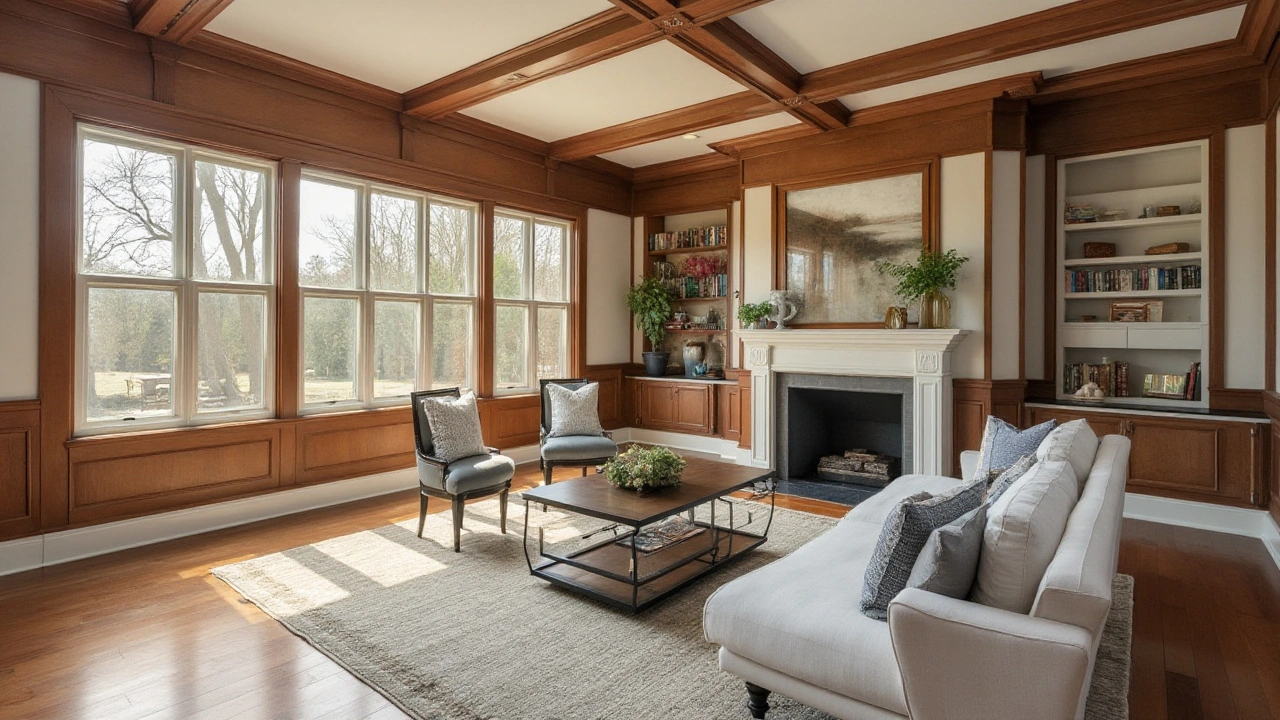
Key Architectural Features
If you ever find yourself standing in front of a house that feels both dignified and welcoming, there's a good chance you’re looking at a Colonial Revival home. This architectural style is known for its symmetry, balanced proportions, and a certain understated elegance that leaves a lasting impression.
One of the most obvious features is the center hall floor plan. Most Colonial Revival homes have a grand entryway that opens to a central hallway, often with a staircase that leads to the upper floors. This gives an immediate sense of order and balance.
Windows play a vital role in the aesthetics of Colonial Revival architecture. Typically, homes feature double-hung windows with multiple panes. These windows are often arranged symmetrically around the facade, enhancing the home's balanced appearance. In many cases, shutters are added not only for practicality but also for visual impact.
The doorways are another standout characteristic. A Colonial Revival home often features an elaborate front door with decorative crown pediments, sidelights, and sometimes even fanlights. This creates an inviting yet grand entrance that becomes a focal point of the house.
Brick and wood are commonly used materials, adding to the timeless and sturdy feel of these homes. A brick facade combined with wooden elements like columns and trim gives a balanced blend of strength and warmth. Columns, particularly in the form of pilasters or full-height, contribute to the stately essence of the style.
"Colonial Revival homes offer a historical charm blended with modern convenience, making them an excellent choice for homeowners looking for the best of both worlds,” says architectural historian Richard Guy Wilson.
Another notable feature is the roof. Oftentimes, Colonial Revival homes sport a gabled or hipped roof, lending a clean, straightforward appearance. Dormer windows are frequently added to the roofline, which not only enhances the design but also allows for additional natural light and ventilation.
Don't overlook the interior details either. Inside a Colonial Revival home, you'll find traditional elements such as built-in cabinetry, wainscoting, and crown molding. Fireplaces, often placed centrally, serve as a cozy focal point in living areas.
For those interested in incorporating Colonial Revival elements into a modern home, it’s essential to note that the style is remarkably adaptable. You can integrate these distinctive features in various ways, from exterior facades to interior décor. The result is a home that feels both nostalgic and contemporary, offering the best of both eras.

Incorporating Colonial Revival in Modern Homes
Adding Colonial Revival elements to modern homes is like weaving timeless elegance into the fabric of contemporary living. To achieve this balance, start by focusing on exterior features, which prominently define the style. Symmetry is key, so consider designing a facade that mirrors this principle. Features like a centered front door, often adorned with classical columns or pilasters, set the tone effectively.
Larger homes can benefit from incorporating gable roofs, dormer windows, and brick or wood siding to bring the exterior in line with traditional Colonial influences. Yet, the appeal of Colonial Revival isn't limited to exteriors alone. Interiors can also reflect this aesthetic through wall paneling, crown molding, and hardwood floors. These elements together create a cohesive and charming look, lending a feeling of historical richness.
Living spaces should embrace simplicity and elegance. Paint walls in warm, neutral colors that mimic the hues used historically, such as creams, soft yellows, and muted greens. Furniture selections should lean towards classic, wooden pieces with a handcrafted feel. Think claw-foot tables, ladder-back chairs, and Chippendale settees. Adding area rugs with traditional patterns can complement the decor seamlessly.
Colonial Revival kitchens exude a certain charm, often through the use of shaker-style cabinetry, apron sinks, and butcher-block countertops. Consider pendant lights and vintage-inspired hardware to complete the look. If space allows, a hearth or a brick backsplash can serve as an eye-catching central feature that ties the kitchen together.
While working on bedrooms, consider canopy beds, armoires, and quilted bedspreads for an authentic feel. Hang vintage portraits or landscapes framed in dark, wooden frames to add character to the walls. Shutters on windows can also provide an extra touch of Colonial authenticity while serving a practical purpose.
Don’t forget about the little details that bring the whole look together. Incorporate antique or reproduction light fixtures, such as chandeliers or wall sconces, for a touch of vintage elegance. Brass or bronze finishes for handles and knobs can accentuate the traditional vibes. Additionally, classic floral patterns or stripes for curtains and upholstery can inject some historical flair into the design.
"The beauty of Colonial Revival architecture lies in its balance between formality and warmth, creating a space that feels both grand and inviting," says architectural historian Jessica S. Phillips.
Incorporating landscaping that complements Colonial Revival design can further enhance the appeal. Think about a manicured lawn, boxwood hedges, and stone pathways. Simple, well-placed fences and lantern-style lighting can add the finishing touches.
If you are renovating an existing home, you don't need to overhaul everything to achieve a Colonial Revival look. Small changes like adding crown molding, replacing modern light fixtures with period-appropriate ones, or even updating the front door to feature sidelights and a transom can make a significant impact. Embrace the elegance and history of Colonial Revival architecture, and let your modern home tell a story that spans generations.
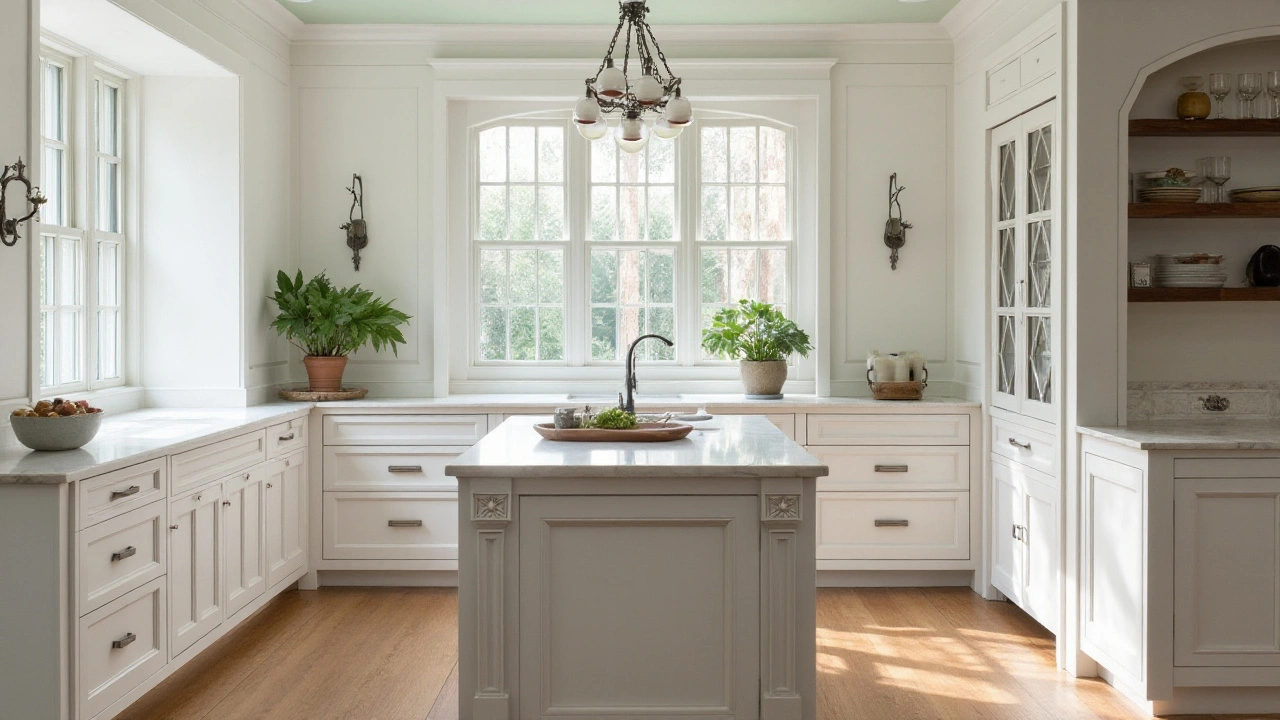
Interesting Facts and Practical Tips
Colonial Revival architecture is steeped in history and charm, offering unique ways to bring a touch of elegance to modern homes. Knowing some fascinating facts can deepen your appreciation for this timeless style. For starters, Colonial Revival isn't just about copying historic designs; it skillfully modernizes these elements for contemporary living. This style first gained popularity at the 1876 Centennial Exposition in Philadelphia, where a renewed interest in America’s colonial roots ignited public imagination.
Did you know that the symmetrical facades common in Colonial Revival homes were inspired by Georgian and Federal-style architecture from the 18th century? These design principles were established to create a sense of order and balance, a stark contrast to the more ornate Victorian architecture prevalent at the time. It’s interesting to note that materials like brick and wood are often used to give these homes their authentic, classic look.
To incorporate Colonial Revival elements into your modern home, start with some characteristic features like pedimented doorways, multi-pane windows, and gabled roofs. These elements add a touch of history and make the home feel versatile. Try adding classic columns or shutters to create a more authentic look. Even small changes, like opting for a white trim or historically accurate paint colors, can make a significant impact.
Here's a tip: focus on the finer details to make your modern home feel more Colonial. Crown moldings, wainscoting, and built-in cabinetry can lend a room an air of sophistication reminiscent of early American homes. Additionally, consider landscaping that includes symmetrical garden layouts, something commonly found in Colonial Revival estates. This creates a sense of cohesion between the architecture and the outdoor space.
Another interesting fact is the resurgence of interest in Colonial Revival after World War II. Men and women returning from war sought stability and comfort, leading to a renewed interest in traditional styles. This led to a wave of new homes built in this timeless style, many of which still stand today.
When integrating Colonial Revival into your home, it's also crucial to think about the interior decor. Furniture that features simple lines, dark wood, and classic upholstery can complement the architectural style. For a modern twist, consider blending these traditional elements with contemporary pieces to create a balanced, eclectic look.
Lastly, for those who adore details and craftsmanship, focusing on authentic hardware like brass doorknobs, vintage light fixtures, and traditional fireplace mantels can elevate the authenticity. Remember, consistency in style can bring harmony to your living space, making it both elegant and inviting.

